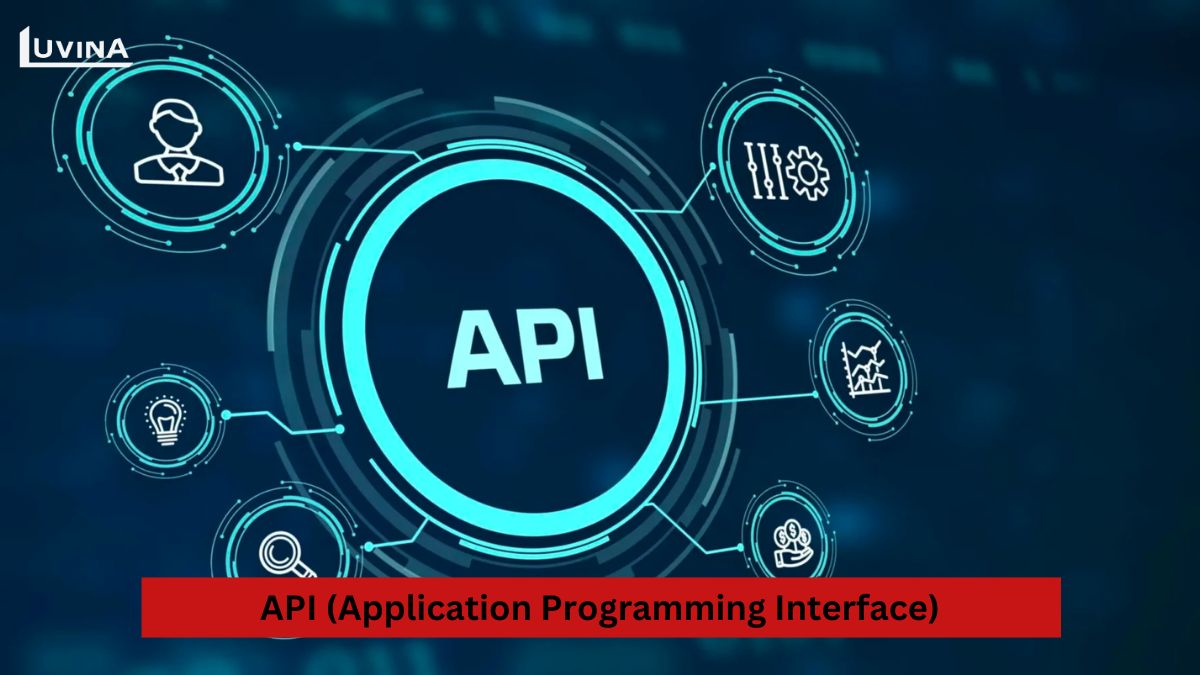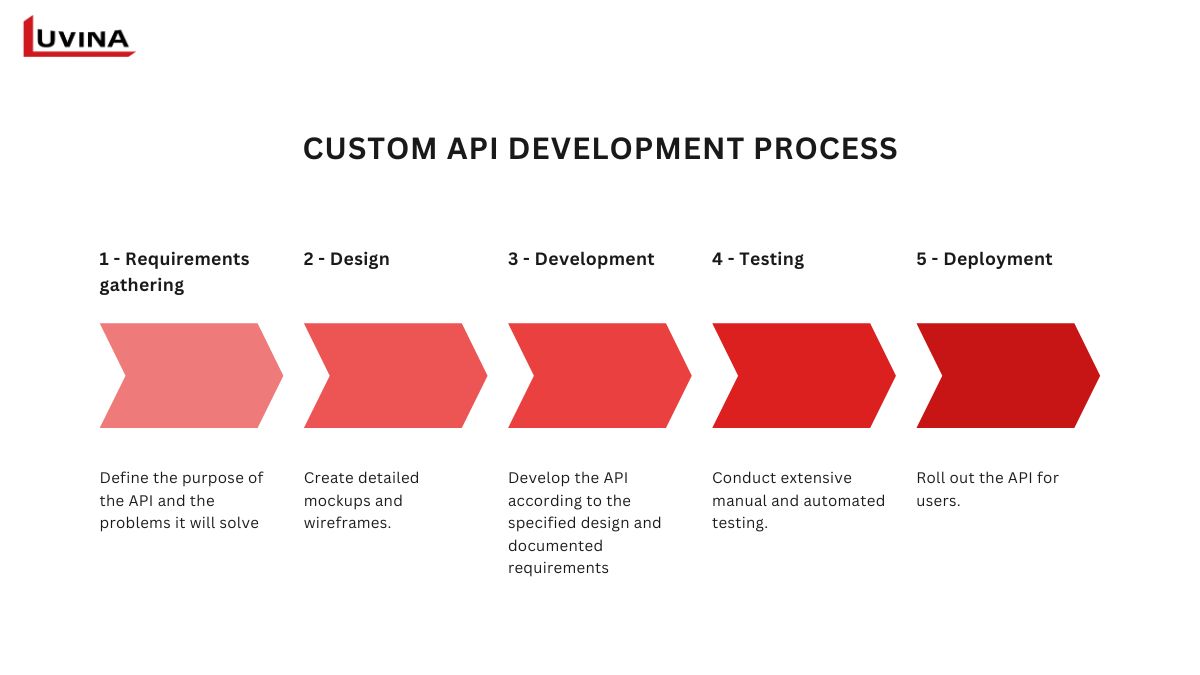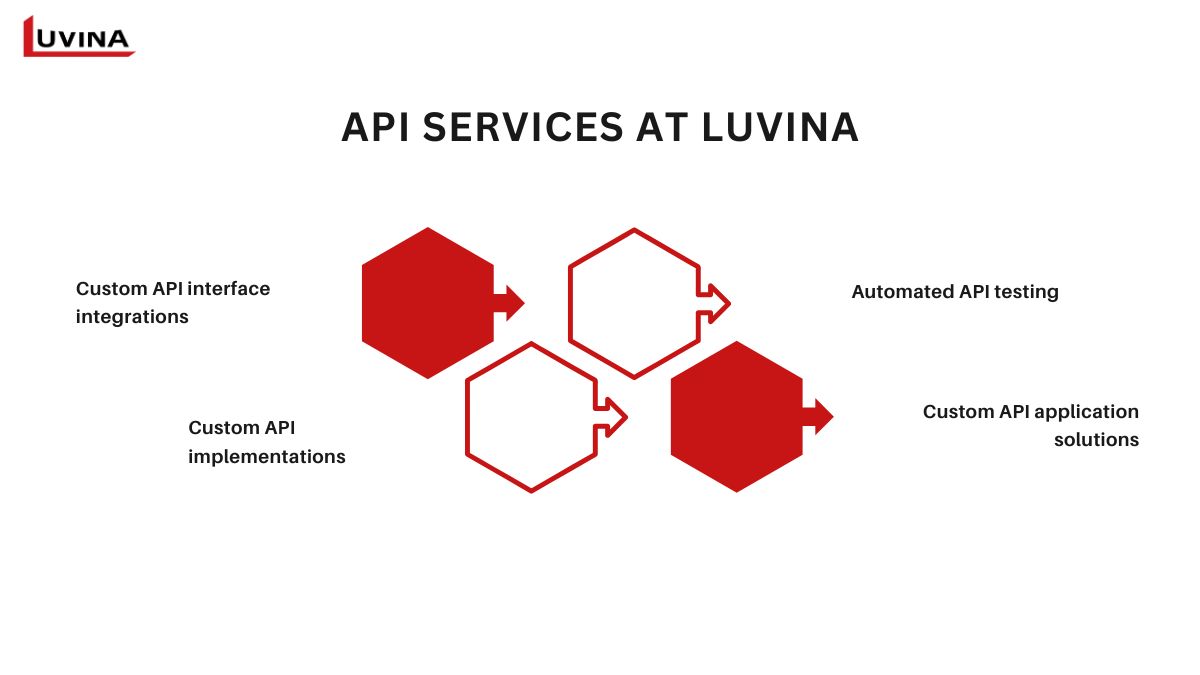Today, there is a need for seamless interaction among applications to be efficient, automated, and innovative. Yet, most businesses struggle with siloed systems, manual data processing, and missed opportunities due to a lack of integration. This is where custom API development can step in to assist businesses in developing tailored APIs that connect systems, automate workflows, and enhance performance.
By leveraging custom APIs, organizations can automate business processes, increase data sharing, and create scalable solutions that drive growth. Want to unlock the full potential of your technology stack? Follow this guide as a roadmap and see how custom API development services can transform your business.
What is an API?
An API (Application Programming Interface) is a well-organized set of protocols and rules that enables communication and data exchange between different software applications in an efficient way. Being a system connector, APIs enable the smooth integration of applications within organizations by different methods or between different platforms. APIs are required to build integrated digital ecosystems where applications run seamlessly without direct access to each other’s internal code.

APIs power modern applications, from web and mobile apps to cloud services. They enhance automation, data sharing, and functionality. With custom API development, businesses gain:
- – Secure and scalable system integration
- – Automated workflows and real-time data exchange
- – Improved efficiency and user experience
Custom API development and integration: Choose the right approach
Understanding the distinction between integrations and APIs is critical to the design and functionality of modern software systems. Since they are both critical to the facilitation of free data exchange as well as interconnectivity, their timing and usage methods may impact the scalability and efficiency of your system significantly. The following explains the critical differences, advantages, and most effective ways of applying APIs and integrations.
1. API development
Creating an API from scratch allows businesses to have complete control of functionality, with end-to-end communication among applications. Compared to preconfigured integrations, an API created on a custom basis is built specifically to meet the needs of businesses, allowing unique user experiences, efficient workflows, and better performance. This works extremely well for businesses that require data to be processed in real time, complex business logic, or heavily customized user interfaces.
Some of the key benefits of developing custom APIs:
- Complete customization: Design APIs to fulfill specific business requirements, with flexibility and scalability.
- Better performance: Enhance API performance for real-time data processing and demanding applications.
- Enhanced user experience: Design simple and intuitive interfaces that offer better customer experiences.
- More control: Have full control of all API features without any constraints by third-party providers.
- Enhanced security: Apply security controls to fulfill exact business requirements, reducing possible vulnerabilities.
Custom API development process

Building a custom API is a meticulous process to provide functionality, performance, and security. Custom API development is not a straightforward integration but a step-by-step process to create a solution to meet specific business needs.
Development usually involves several core phases, from planning to deployment.
- – Requirements gathering: Define the purpose of the API and the problems it will solve.
- – Design: Create detailed mockups and wireframes that outline the structure and interface of the API.
- – Development: Develop the API according to the specified design and documented requirements.
- – Testing: Conduct extensive manual and automated testing to find and fix issues up-front with high quality.
- – Deployment: Roll out the API for users on a smooth upgrade with industry-best performance.
Best Practices for Custom API Development
When creating a custom API, the best practices must be followed to render the API efficient, secure, and scalable. Some of the most important practices that can ensure successful API development include:
- Define a clear purpose and business case: Understanding the goals behind the API helps set the scope and expectations. A well-set business case will make sure that the API resolves an issue or meets a requirement and enables the developers to parameterize the functionality to achieve the desired outcome and address potential problems.
- Adopt modern API architectures: By following REST (Representational State Transfer), GraphQL, and WebSocket principles… developers can see to it that the API remains scalable and not too heavy. Using typical HTTP methods like GET, POST, PUT, and DELETE makes it simple to install the API across many platforms and therefore to transfer data seamlessly among different systems.
- Ensure scalability from the start: As user demand grows, your API should be able to handle increased traffic without compromising performance. APIs need to be stateless to scale; that is, each request should not rely on interactions made before.
- Prioritize security: An API that is properly secured can stop ordinary vulnerabilities like data breaches and cyberattacks. Major security steps to undertake are the use of API keys for authentication, enabling OAuth 2.0 protocols for safe authorization, application of SSL/TLS encryption to safeguard data transmission, and creation of rate limiting to reduce DDoS (Denial of Service) attacks.
- Provide comprehensive documentation: Comprehensive documentation is faster and easier to integrate for an extensively documented API, which offers all the knowledge users need on the endpoints of the API and how it functions. Good documentation will cover all endpoints, nice examples, code snippets, and best practices for developers following the API correctly.
- Conduct thorough testing: Rigorous testing is required to guarantee the API works as intended, remains secure, and runs fast. Functional testing to validate the API’s correct operation according to the stated criteria, as well as performance testing to certify it can manage load and stress scenarios, is also part of this. Security testing should furthermore be done to expose and solve possible security weaknesses..
- Implement monitoring and analytics: Once deployed, the API should be under constant monitoring to monitor its performance and usage patterns. Analytics packages can be used to obtain insights into how the API is being used, identify any performance issues related to it, and pinpoint errors.
2. API Integration
To enable more straightforward communication and better functionality, API integration entails interfacing several applications or software systems using APIs. Businesses can choose custom API integration services that allow easy integration of off-the-shelf solutions, operate more efficiently, and achieve cost savings rather than starting from scratch. This is a faster and more cost-effective way of meeting operational objectives by employing predeployed solutions already equipped with the required features and functions.

Below are some benefits of API integration:
- – Faster development time: Uprooting the necessity of starting new features from scratch allows businesses to greatly cut development time, therefore boosting products’ time to market.
- – Cost-effective solution: Companies may install third-party solutions with the same features for a lower cost rather than spending money on building sophisticated capabilities in-house.
- – Access to specialized expertise: API integrations might also offer access to specialized abilities and features that would be hard or time-consuming to acquire inside.
- – Improved reliability and scalability: Preexisting APIs are usually thoroughly tested and ideal for scalability. Businesses can use tried and tested, dependable tools that grow with the company to help performance stay high even when demand rises.
- – Streamlined workflows: Custom API integration solutions can automate routine activities and limit manual input—that is to say, data entry or report creation—thereby simplifying and more perfect workflows run.
- – Increased efficiency: Real-time data sharing among systems helps to improve decision accuracy by averting delays, decreasing mistakes, and enhancing efficiency.
- – Enhanced customer experience: API integration has the possibility to combine customer data from many sources so enabling companies to offer more tailored services and enhance user interactions.
API integration process
API integration refers to the act of merging existing APIs with your systems without any issues.

Key steps in API integration are:
- – Researching available APIs: Begin by finding APIs that suit your business needs based on attributes such as features, pricing, and usability.
- – Choosing the best-fit API: Choose the API that suits your project best. Consider vital parameters such as documentation quality, support offered, maintenance services, and compatibility with your existing technology stack.
- – Integrating the API: Set up the API, configure it according to your requirements, and ensure that it’s properly connected to your codebase.
- – Testing the integration: Check if the integrated API performs as expected and if there are any issues or inconsistencies in its functioning in your system. Proper testing prevents likely disruptions when the API is live.
Best practices for seamless custom API integration
When it comes to custom API integration services, successful integration is vital to ensure smooth functionality between various software systems. Below are key guidelines to follow when integrating custom APIs:
- Define integration requirements: Understanding the type of data to be shared, the systems to be integrated, and how the integration must occur. Being extremely clear on these allows the integration to achieve business objectives and end-user expectations.
- Choose a reliable integration platform: Using robust integration platforms like MuleSoft, Dell Boomi, or Microsoft Azure provides good tools and frameworks to build, deploy, and manage custom API integrations without any risk of errors or downtime.
- Implement data mapping and transformation: By using mapping tools, you can align fields and attributes from different data sources, while transformation tools help convert data into the required formats and structures, ensuring consistency throughout the integration process.
- Conduct thorough testing and validation: Perform rigorous testing to validate that the integration meets functional as well as non-functional requirements, such as data accuracy, performance, and system reliability.
- Monitor and analyze integration performance: You can monitor key metrics such as error rates, response times, and overall system performance with the help of analytics tools, which makes it easier to fine-tune integrations and optimize the user experience.
3. Custom API development vs. integration: When to use
When determining whether to employ custom API development or an entire integration, it is important to weigh the specific needs of your application or business. Both have distinct advantages depending on the scope, level of customization, and the level of interaction required.
| Custom API development | API integration | |
| Scope of communication | Accessing and manipulating some functions or data of a different system directly. | Seamless integration of systems or programs, where data exchange and workflow management are constant. |
| Customization | High degree of customization. | Tailor the connection between systems, offering flexibility in how data is accessed or exchanged. |
| Frequency of interaction | On-demand or occasional data exchange. | Continuous data exchange and automation. |
In the real world, you should develop an API from scratch if you:
- – Need to retrieve data from external systems often
- – Would like to enable third-party authentication so users can log in to your site via social media profiles.
- – Need to send data to external services
- – Require real-time data updates
On the other hand, implement API integration if you:
- – Want to sync data between platforms
- – Need to synchronize financial data between your ERP system and accounting software
- – Have an inventory system that needs to be automatically updated every time an item is sold online.
- – Require employee data to sync between your HR system and payroll software
Luvina – Best Custom API development and integration company
At Luvina, we specialize in custom API development that suits your specific business needs. We possess the team to handle everything from the first coding to seamless deployment, ensuring your API is both secure and efficient.

Custom API interface integrations
At Luvina, we specialize in crafting tailored REST APIs to integrate seamlessly with your existing solutions. Whether complementing your off-the-shelf applications or utilizing third-party public APIs, we ensure that your application can connect well with other apps, devices, and business systems.
Custom API implementations
We provide end-to-end internal and external API documentation solutions that address server communication issues, content handling, data exchange, business logic, and microservices. Our implementation approach is designed to ensure smooth operation by preventing issues in advance, offering a solid foundation on which your API will run securely within your system.
Automated API testing
Luvina’s group of experts utilizes automated unit testing, functional testing, and load testing tools to monitor and enhance your API’s performance. We ensure your business-critical applications function at their optimum, delivering consistent and profitable outcomes.
Custom API application solutions
Luvina offers custom solutions for all types of APIs, including public, partner, private, and composite. Our expertise includes mobile, desktop, and cloud-based API applications with service-oriented architectures (SOA), web sockets, operating systems, firmware/hardware, and databases. For a straightforward web application or a complex enterprise solution, if you need a high-performance API, Luvina is your one-stop custom API development company.
Luvina offers tailored API solutions that suit the unique needs of our diverse client base. Having decades of experience in the industry, we proudly offer timely solutions with a level of quality above expectations.

- Proven quality & reputation: Since 2004, Luvina has gained recognition for its consistent delivery of high-quality solutions, earning the trust of hundreds of Japanese clients.
- Agility & adaptability: We are agile, providing you with the flexibility to select the model of work and technology stack that suits your project’s requirements.
- Comprehensive IP security solutions: We adhere to international security standards to protect your intellectual property, ensuring peace of mind with every project.
- Multilingual team: Our highly professional, multilingual staff ensures smooth communication in diverse markets and breaks the language barrier effortlessly.
- Unwavering commitment: Our team’s steadfast commitment ensures that every challenge is tackled with resolve, guaranteeing your project’s success.
Conclusion
Custom API development is a powerful tool that helps businesses streamline data sharing and improve collaboration between different applications. At Luvina, we offer a wide spectrum of API development services, ranging from API support to team and connector development, providing robust, scalable, and easily integrated solutions for your company.
Ready to scale your business with custom API solutions? Contact us now and get a FREE consultation!








Read More From Us?
Sign up for our newsletter
Read More From Us?
Sign up for our newsletter